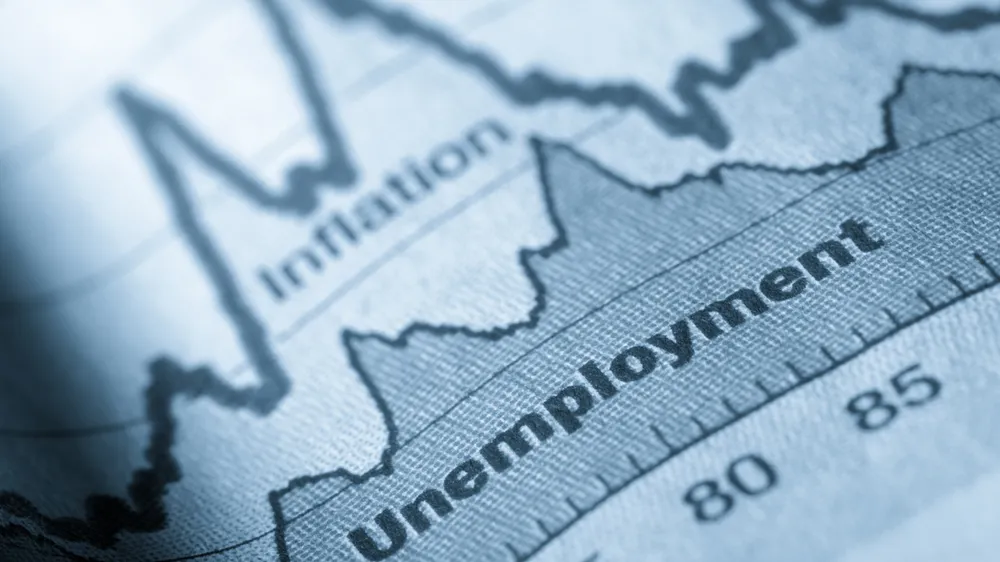
Along with this is the lurking fear of high inflation, due to shortage of domestic petroleum supply and the current ongoing Russia-Ukraine war. Policymakers now foresee a possible trade-off between inflation and unemployment in coming time.
Phillips curve
The Phillips curve was named after the economist A.W. Phillips, when he published the results of his research on the negative correlation between the unemployment rate and the rate of change in wages in England from 1861 to 1957. When making fiscal and monetary decisions, policymakers often consider the trade-off between inflation and unemployment to adjust according to the Phillips curve.
This reinforces the Keynesian theories, which focus on aggregate demand. When there is an increase in aggregate demand in the short run, it leads to a larger output of goods and services at a higher price. Greater output means more job creation, which leads to lower unemployment, but with higher prices, higher inflation rates and vice versa. Currently, however, inflation seems to have become less related to unemployment, creating a flatter Phillips curve.
The negative correlation between inflation and unemployment seems to have persisted in the United States from the 1950s to the 1960s. Until the 1970s, the United States experienced a period of very high inflation, where the economy was stagnant and unemployment was high, causing stagflation. This phenomenon is explained by the inflation expectations of workers having increased too much. This means that the inflation recorded during this time period reflects the thoughts and expectations of the public, the market, and the economy about the future price level, and thus escapes the influence of the unemployment rate. In addition, domestic inflation is also affected by imported inflation from outside. When the people of a country buy anything from the rest of the world, the movement in the prices of these imported goods and services affects the rate of inflation in the country, especially important and sensitive commodities such as gasoline and oil.
In addition, Central Banks also play a part in the flattening of the Phillips curve. With the pursuit of countercyclical policies, Central Banks will tighten monetary policy when they see that inflation is likely to increase, and vice versa when inflation shows signs of slowing down. Consequently, the unemployment rate rises before inflation rises and falls before inflation falls. These policies aim to keep inflation constant by adjusting the unemployment rate.
Statistical inadequacies
During the period 2010 until 2020, Vietnam's inflation rate fluctuated constantly, peaking at 18% in 2011. On the other hand, the unemployment rate did not change too much in the same period. Therefore, in Vietnam, there is also no clear relationship between the unemployment rate and inflation according to the Phillips curve. The question is that if in addition to the above confounding factors, what other factors have affected the lack of cohesion according to the Phillips curve of unemployment and inflation in Vietnam is to be seen. This is a difficult question to answer accurately because Vietnam's unemployment rate statistics are dishonest and information about employment and labor is also inaccurate.
In the second and third quarters of 2021, when the Covid-19 pandemic had peaked, Vietnam's unemployment rate was 2.62% and 3.98%. Although it has increased much compared to the beginning of the year, it is still quite low compared to the perception of many businesses. During this time, many businesses have stopped operating, and 80% to 90% of employees working in tourism and the hotel industry have lost their jobs. In Ho Chi Minh City alone, more than 99% of businesses have stopped operating, leading to many employees losing their essential monthly income. However, this figure for the same period of time for G7 countries was 5.53% in 2021 and 5% at peak of pandemic, and in OECD countries it was 6.46% in 2021 and 5.91% during peak pandemic.
Vietnam is on the top of countries with the lowest unemployment rate in the world, but this achievement may not be positive. According to the General Statistics Office (GSO), the unemployed are those who are above 15 years-of-age or older in the reference period and who fully meet the factors of not working; looking for work; ready to work; or are under Government good social security allowance for the unemployed. This may explain why this rate is much higher in developed countries than in developing countries. In Vietnam, it is difficult for workers to survive without a job.
According to GSO definition, people who lost their jobs during the pandemic, but had to work in precarious jobs such as driving a motorbike taxi, helping with errands, or were running an hourly pay desk to make a living, would not be termed unemployed. Even jobs without a labor contract when joining the informal economy cannot be counted as unemployed. This also covers those who still have financial reserves, so they haven't yet found a new job due to the current unstable situation, or are under temporary leave.
According to the GSO announcement, the CPI in February 2022 only increased by 1.42% compared to the same period in 2021. It seems that this is quite good when the achievements in controlling inflation are still maintained. However, this record of macroeconomic stability can sometimes come at the cost of a real rise in unemployment. Since we still don't have accurate measures, no one can express the feelings of employees, despite low inflation and macroeconomic stability.




















